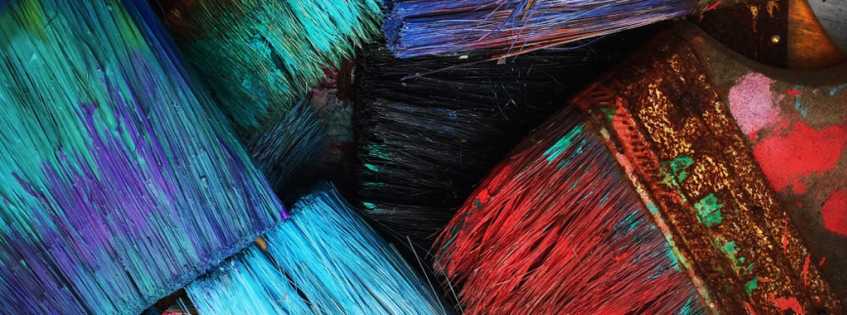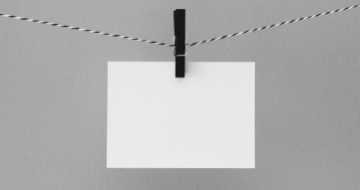- All Management Learning Resources
- What is innovation

Executive summary
We live in an era of “disruption” – new, mold-breaking technologies and modes of doing business are the norm, rather than the exception. Technology is evolving at an unprecedent pace, and bold industry leaders are constantly inventing new ways of communicating, collaborating, and doing meaningful work. In this business context, cultivating a team of innovative thinkers is more vital than ever. As a manager, you need to understand what innovation is and the psychological principles behind challenging, practical innovation, so that you can hire for it and create a culture that cultivates it. This CQ Dossier will review the existing psychological research on how innovation and innovative thinking is defined, its relation to creativity, and how it impacts success in an organizational context.
Contents
- Executive summary
- What is innovation and innovative thinking?
- Innovation is defined as being borne from unique thinking
- Creativity starts with divergent thinking
- In order to be innovative an idea has to be useful
- Useful creativity solves an existing problem
- The final component of Innovation is its capacity to be productive
- An innovative work environment drives idea generation
- Problem finding is a key skill of Innovative thinkers
- Framing inefficiencies as problems before they erupt
- Key take-aways
- References and further reading
What is innovation and innovative thinking?
If you aim to make your organization a vibrant, innovative, and productive place, you need to know the difference between thinking that is merely original and true innovation that is useful, implementable, and likely to have a large impact on your field (Amabile, 1983). Fortunately, a wealth of psychological research is available on this subject. Creativity- and problem-solving researchers have worked for decades to define and distill exactly what innovative thinking consists of, and what makes it distinct from less useful expressions of creativity.
Innovation is defined as being borne from unique thinking
Innovation is defined, first and foremost, as being borne from unique thinking (Randel & Jaussi, 2017). Highly creative individuals engage in a large volume of divergent thinking – in other words, they generate ideas and reactions that are unlike those of the average person (An, Song, & Carr, 2016). Their thought processes diverge from the well-beaten path. By generating ideas that are odd or rare, divergent thinkers “open up” conversations, and encourage those around them to consider strategies and technologies that were not on the table previously.
Creativity starts with divergent thinking
To illustrate this, consider one of the most infamous measures of divergent thinking that exists: the “uses-for-a-brick” test (also known as the Alternative Uses test, by Guildford, 1975). In this test, participants are asked to list as many possible ways to use a brick as they can think of, in a span of a few minutes. The average person will initially list very common, self-evident uses for a brick – building a house and weighing down papers, for example. A divergent thinker will tend to come up with options that are far more strange and rare from the outset of the task – using it to weigh down crime evidence thrown into a lake, for example.
The reactions and suggestions of a unique, divergent thinker can initially come across as odd, in appropriate, or even useless (Best, Arora, Porter, & Doherty, 2015). Indeed, some highly creative thinking is useless – it may be impossible to implement, impractical, off-topic, or nonsensical at times. Accordingly, the uniqueness of a person’s thoughts is not the only benchmark by which their innovation potential ought to be measured. The usefulness of creative ideas must be considered as well.
In order to be innovative an idea has to be useful
Most psychologists who study the science of creativity hold that true innovation must be both unique and useful. In order to be truly innovative, a distinctive idea must be feasible, capable of solving a problem, or valuable to other people in some way (Runco & Jaeger, 2012). Within an organization, harnessing useful creativity is key to building a culture of innovation. A “throw-anything-at-the-wall-and-see-what-sticks” approach may lead to the generation of numerous ideas, many of them unusual, but it may not result in any viable solutions or lasting disruptions being found.
Useful creativity solves an existing problem
How should the usefulness of an idea be evaluated? There is a degree of subjectivity to this process. First, the usefulness of an idea is highly dependent on the context (Carazza, 2016). Do you work in an industry where risky, bold moves are encouraged, and failure can be afforded? If so, relatively odd, challenging ideas may be useful. However, if you work in a field or an organization that is deeply risk-averse, where large changes can come at a massive cost, then you will need to place greater restrictions on what you consider to be an acceptably creative idea.
Useful creativity often solves an existing problem – perhaps by introducing a clear solution or reworking the way business is done. However, a truly innovative solution may redefine the problem, or cast it in an entirely new light (Csikszentmihalyi & Sawyer, 2014). The way out of a problem scenario may be completely distinct from what anyone on your team had previously anticipated. Highly innovative proposals can lead to a lasting organizational change, and shift how everyone on a team views their work and goals. Thus, the final component of defining innovation is its capacity to be productive.
The final component of Innovation is its capacity to be productive
Within and organization, creative & useful thinking can lead to a renaissance of productivity. Innovative thinking is exciting and can be challenging, which can boost motivation and output for employees who work near where the innovation is taking place. The productive potential of innovative thinking goes farther than that, however – innovation often breeds further innovation in other people, by reframing how people see a problem and identifying new possibilities. If your organization is experiencing a period of high innovation, you are likely to see greater generation of ideas (high generativity), and the identification of more and more problems to practically solve (problem finding).
An innovative work environment drives idea generation
In an innovative work environment, individuals generate more ideas than usual, and a greater percentage of ideas are unique and useful. Creativity can be somewhat infectious, according to some psychological research; furthermore, thinking in a divergent way is a skill that can be learned through proximity to creative others (Oldham & Cummings, 1996). This is especially the case when new ideas are useful – random creativity is less inspiring than practical innovation. The “infectiousness” of innovation can occur on an individual and an organizational level – a highly creative employee can encourage others to be more innovative in their midst, but a culture of creativity can also be fostered from the top-down, to boost the innovation across an entire team (Amabile et al, 1996).
Whether a work environment fosters or inhibits innovative thinking depends on a variety of factors. There are even some toxic workplace factors such as rigid hierarchies, pressure to deliver short-term results and workplace hostility that undermine creativity and innovation. On the contrary, a work environment that encourages employees to speak-up, to collaborate and to take risks have a positive impact on idea generation.
Problem finding is a key skill of Innovative thinkers
Meaningful innovation is not reactive, it is proactive. While a creative solution to an existing industry problem can be impactful and valuable, it may still be engaging with the problem as it has been typically defined and perceived. Innovative thinkers reframe problems in new ways – a communication problem may be seen, in their eyes, as a technological problem, or a pain point may be seen as an opportunity. Innovative thinkers are often adept at “problem finding” – seeing a need or an area of improvement that has not even been identified as a “problem” yet by others (Hocking & Vernon, 2017).
Framing inefficiencies as problems before they erupt
Prior to the development of grocery-delivery services like Peapod and Instacart, the average person (including the average person in the grocery industry) would not have seen the process of going to a store and buying groceries as featuring an “problem”. However, by contrasting how groceries are bought with how take-out food is ordered, a clear problem (and a space for innovation) could be found, and a new industry was born.
The age-old process of hailing a cab was not seen as a “problem” by many; however, once clear inefficiencies in the process were noticed and a “problem” was found, the ground was laid for the development of Uber and Lyft. By finding problems before they erupt, and by seeing inefficiencies as pressing concerns that must be addressed, an innovative thinker can change how an organization is run, shift how business is done, and lead to the creation of new, paradigm-shifting technologies.
Key take-aways
- Innovative thinking must be both unique and useful.
- Unique thinking is defined by its divergence from the norm.
- The usefulness of a creative idea hinges on the needs of an organization, and its comfort with risk.
- Innovation can inspire team members to generate new ideas and deliver greater output.
- Extremely innovative individuals can locate problems that others have not yet recognized, and deliver solutions that shift paradigms.
Management skills newsletter
Join our monthly newsletter to receive management tips, tricks and insights directly into your inbox!
References and further reading
Amabile, T. M. (1983). The social psychology of creativity: A componential conceptualization. Journal of Personality and Social Psychology, 45(2), 357.
Amabile, T. M., Conti, R., Coon, H., Lazenby, J., & Herron, M. (1996). Assessing the work environment for creativity. Academy of management journal, 39(5), 1154-1184.
An, D., Song, Y., & Carr, M. (2016). A comparison of two models of creativity: Divergent thinking and creative expert performance. Personality and Individual Differences, 90, 78-84.
Best, C., Arora, S., Porter, F., & Doherty, M. (2015). The relationship between subthreshold autistic traits, ambiguous figure perception and divergent thinking. Journal of autism and developmental disorders, 45(12), 4064-4073.
Corazza, G. E. (2016). Potential originality and effectiveness: The dynamic definition of creativity. Creativity Research Journal, 28(3), 258-267.
Csikszentmihalyi, M., & Sawyer, K. (2014). Creative insight: The social dimension of a solitary moment. In The systems model of creativity (pp. 73-98). Springer Netherlands.
Guilford, J. P. (1975). Varieties of creative giftedness, their measurement and development. Gifted Child Quarterly, 19(2), 107-121.
Oldham, G. R., & Cummings, A. (1996). Employee creativity: Personal and contextual factors at work. Academy of management journal, 39(3), 607-634.
Randel, A. E., & Jaussi, K. S. (2017). Leading for uniqueness: The role of uniqueness in facilitating creativity in employees’ self-concepts. In The Creative Self (pp. 289-299).
Runco, M. A., & Jaeger, G. J. (2012). The standard definition of creativity. Creativity Research Journal, 24(1), 92-96.
About the Author

Related Dossiers





